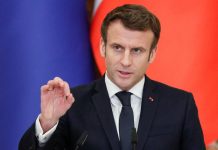Four years ago, as hostilities were still taking place in Syria between the regime and various opposition groups, the Astana talks were launched and a broad cease-fire was reached, mainly through an agreement between Russia and Turkey. The Astana talks were, for many, a first realization of the importance of the Greater Middle East, from North Africa to Central Asia.
It was the first time an Arab issue was negotiated and hosted in Central Asia. The neutral grounds were previously often Geneva or Oslo. The important role that Kazakhstan played in promoting a positive negotiation was clear. It is the positive relations that Kazakhstan maintains with Russia and Turkey, along with its closeness with the Gulf countries and the US, which enabled the process to take place.
The Astana talks were also a realization that the Middle East was getting bigger in terms of the number of stakeholders, yet smaller in terms of the impact of one side to the other. If, in the past, you would only need to choose between the Soviet Union or the US, now great powers and middle powers all have the capacity to interfere and act, making solution-building more difficult. On the other hand, any crisis or chaos can spread fast from one side of the region to the other.
This was echoed recently with the hostilities between Armenia and Azerbaijan, which left Iran wondering how to strategically position itself. It ended up with tensions with Turkey over Tehran’s sovereignty. Turkish President Recep Tayyip Erdogan’s recital of a nationalist Azeri poem was perceived as a direct threat and was rejected by the Iranian regime. It is a bizarre twist to see Iran tasting its own medicine, as this is exactly its own Arab foreign policy. This foreign policy differs completely from its Central Asian policy, where it is much more respectful. One might say that, if Iran were to respect Arab countries the same it does Central Asian ones, we would have a completely different Greater Middle East.
This greater interdependence, where interests and pragmatism mix with ethnic and religious origins, has become a complicated but clear new paradigm in the region. Therefore, the vision for the Gulf Cooperation Council (GCC) can no longer be limited to the Arab countries, but needs to be broadened. A few studies have highlighted that the GCC countries were the first to engage with Central Asian countries after their independence and the collapse of the Soviet Union. Yet, in comparison with their relations with other Asian countries, such as China or Japan, Central Asia seems like a blank page. Saudi Arabia and the UAE have been able to develop extraordinarily strong ties with East Asia, whether political, cultural or trade. But Central Asia, which represents an important region for global stability, has not benefited from the same level of engagement, although things are moving in the right direction.
GCC countries should build more bridges and links with Central Asia — absolutely not with the focus of countering Iran or Turkey, which have influence and historical links there, but because it makes good sense and increases stability throughout the Greater Middle East. It would also help make the GCC part of the supply chain for energy and goods from Asia to Europe.
Central Asia could be an opportunity for new “sandbox” relations between all the regional and global powers to find a balance and build trust. A positive testing environment for investment, trade and cultural exchanges in Central Asia might be part of an innovative solution for better relations for the entire Greater Middle East. Another important point is the fact that both regions are looking to diversify their economies, and this offers great opportunities. –PNP




